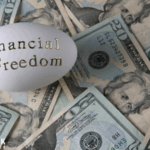Cracker Barrel Old Country Store, a beloved American dining chain, recently sparked controversy with its rebranding initiative. The new logo, introduced in August, replaced the “Uncle Herschel” character, a core part of its identity since the 1970s. This change has drawn significant feedback and a mix of reactions from the public, underscoring the challenges companies often face in balancing modern branding with loyal customer expectations. Former President Donald Trump joined the conversation, urging the company to revert to its traditional logo and capitalize on the recent buzz for promotional success.
In other discussions involving Cracker Barrel’s branding, there have been suggestions that previous logo designs maintained stronger customer connections. Observers recall various rebranding phases which adjusted the logo to remain contemporary while preserving its nostalgic appeal. Such brand evolution has traditionally been a delicate endeavor where consumer sentiment is carefully weighed. Corporate executions have varied in public approval, as both modern and traditional elements are considered. Cracker Barrel’s recent experience serves as a reminder of these potential pitfalls.
What Did Trump Say About the Logo?
Amid the unfolding rebranding debate, Trump expressed his viewpoint on Truth Social, suggesting that Cracker Barrel should acknowledge its misstep and revert to the familiar design.
“Cracker Barrel should go back to the old logo, admit a mistake based on customer response,” he wrote, hinting that doing so would regain customer favor and enhance company management. Trump’s comments emphasize the importance of customer input in brand strategies.
How Did Cracker Barrel Respond to the Backlash?
In response to the backlash, Cracker Barrel acknowledged the strong feelings tied to its iconic identity. The company’s statement, following criticisms, addressed the significance of customer opinions and maintaining brand essence.
“You’ve also shown us that we could’ve done a better job sharing who we are,” a company statement noted, expressing gratitude for the feedback received.
The response highlights their commitment to staying connected with patrons while still innovating.
The company, in its defense, stated that their research reflects an overall positive reception of the new brand direction. This endorsement from the majority suggests satisfaction among many patrons, contrasting with the vocal minority discontented with the changes. The company’s spokesperson reassured that core Cracker Barrel values remain intact. As they continue their long-established service model, “Uncle Herschel” remains integral to their offerings.
Cracker Barrel’s rebranding strategy invites reflection on historical lessons from similar scenarios. The intersection of nostalgia and innovation often challenges brand evolution, where customer loyalty clings to familiar touchpoints. While past decisions involved subtle updates that were often met with acceptance, current feedback underscores the delicate balance required.
The debate surrounding Cracker Barrel’s rebranding effort primarily unfolds around managing legacy and innovation. By ensuring they stay true to original values yet adapting to current trends, they aim to please both longstanding patrons and new visitors. Remaining attentive to public discourse can refine strategies, keeping Cracker Barrel a sought-after choice across its nationwide locations.










